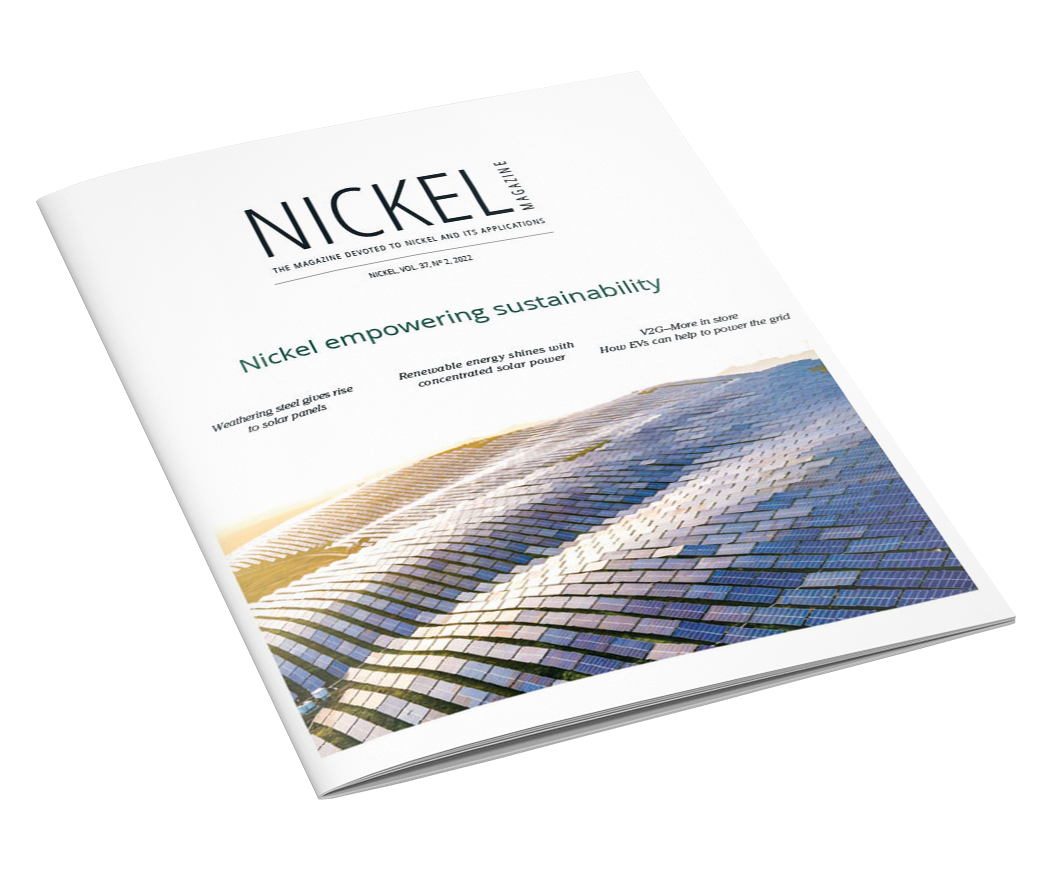Concentrated solar power (CSP) uses mirrors to reflect, concentrate and focus sunlight onto a receiver, which collects and transfers solar energy to a heat transfer fluid. This can be used to supply heat to end-use applications or to generate electricity through conventional steam turbines. CSP technology coupled with thermal energy storage (TES) enables the technology to deliver continuously on days when there is no sun, or before sunrise and after sunset. Early CSP systems without TES are referred to as Generation 1, whereas currently installed CSP systems with TES are called Generation 2 systems.
Renewable energy shines with concentrated solar power
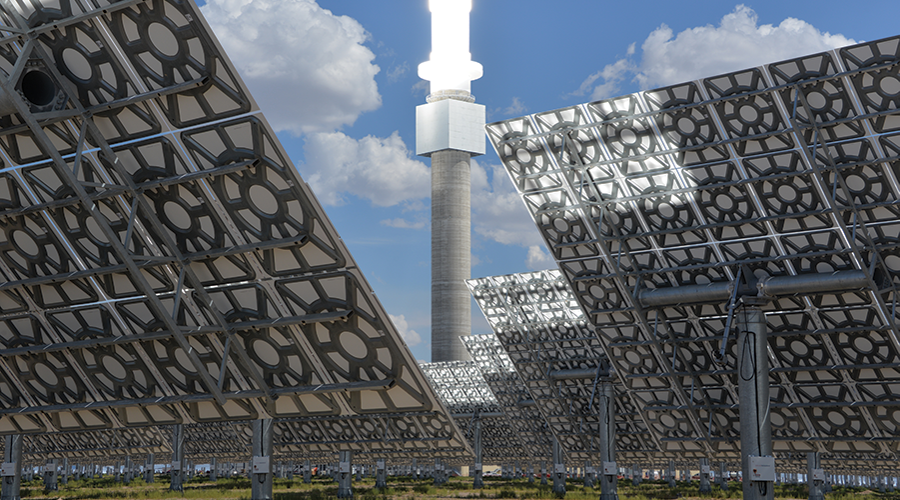
Reducing energy-related CO2 emissions is pivotal to limiting climate change, with the main drivers to bring about the required carbon reductions being renewable energy and energy efficiency. Concentrated solar power is one such renewable energy technology set to increase dramatically in the foreseeable future. It will need to provide energy at a competitive cost to outshine the competition.
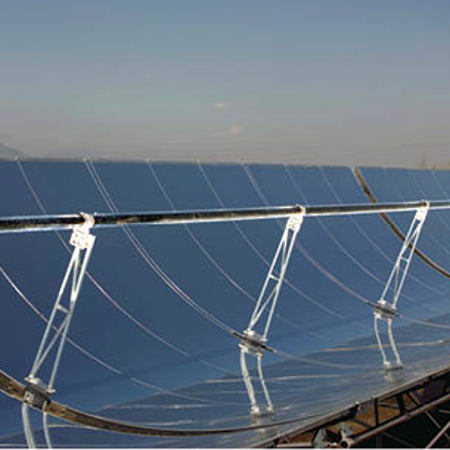
Nickel in generations of concentrated solar power
Operating temperatures sufficiently high for CSP plants to generate electricity can only be maintained in areas of the world with high, direct solar radiation.
There are currently two distinct CSP technologies, parabolic trough or central tower. Nickel-containing stainless steels and nickel-based alloys play a key role in these techniques because they withstand high temperatures and the corrosivity of molten salts, resist wind and erosion in harsh desert climates and are easy to work with.
The parabolic trough system
The parabolic trough system employs reflectors that focus solar radiation onto a fluid-filled receiver tube, concentrating it by a factor of about 100. The thermal energy thus recovered is used to generate steam, which spins a turbine to power a generator. Synthetic oil or molten salt can be used as a heat transmission fluid. In heat exchangers, water is converted to steam that drives conventional turbines. Parabolic troughs attain operating temperatures of 393 °C to 550 °C (739 °F to 1,022 °F) depending on the nature of the heat transfer fluid.
The receiver tubes are made of heat-resistant nickel-containing stainless steel which are coated with a selective layer and sealed in a vacuum insulated borosilicate glass tube.
One advantage of nickel-containing stainless steel is the ease with which a finely polished finish can be applied, which guarantees that the coating stays in place. Also, stainless steel is suited to cope with both temperature differences in the desert which can cause condensation leading to a corrosion risk, as well as the high operating temperature.
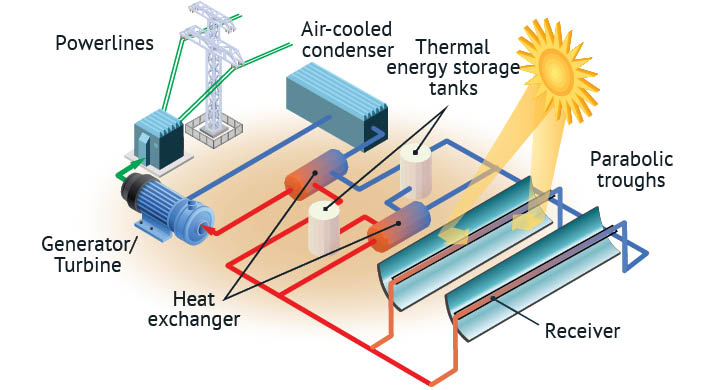
Central tower technology
The central tower technology incorporates a heliostat as a central receiver. Heliostats, which are computer-controlled mirrors, track the sun along two axes and focus solar energy on a central receiver at the top of a tower. There, a fluid is heated, which serves to produce steam and drive generators. Receiver tubes have to face a multitude of requirements: mechanical resistance, cycles of hot service and cold idling (night time) as well as 25 to 35 years anticipated service life.
Currently, only nickel alloys are capable of meeting these conditions. Nickel-base Alloy 625 (UNS N06625), about 61% nickel, is typically used as a standard grade in this application and Alloy 800HT (N08811), 30–34% nickel, or Alloy 230 (N06230), 47–65% nickel, are considered as alternatives.
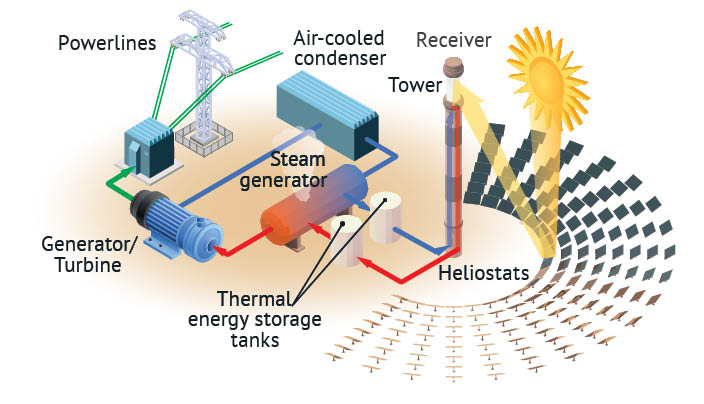
Working principle of a central tower receiver solar power plant
In this technology, molten salt can be used as the heat transfer fluid. Salt retains more energy than substances that are liquid at ambient temperature. Molten salt makes it easier and more efficient to incorporate storage facilities allowing for 24 hour power generation. The vertical set-up of a central tower system also handles molten salt more easily than the mostly horizontal layout of a trough system. Currently deployed central tower systems feature both a hot (565 °C) and a cold (290 °C) molten salt storage unit.
For resistance against high temperatures and corrosion, the former is made of nickel-containing stainless steel, while the latter is made of carbon steel.
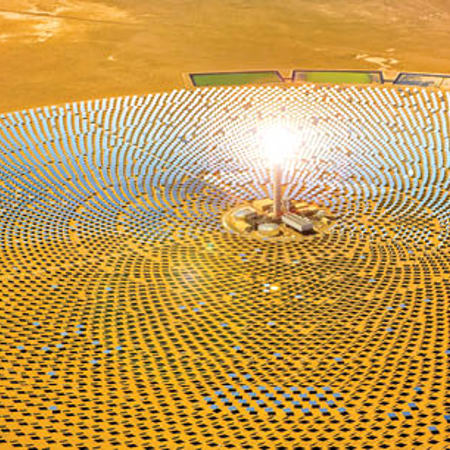
Towards Generation 3
By 2030, the Levelised Cost of Electricity
(LCOE) value of CSP plants in G20 countries is likely to decline by 35% to 8.6 US cents per kilowatt-hour (kWh) from an estimated 13.2 cents/kWh in 2018. The shift from the first to second generation of CSP enabled the LCOE to decrease from 21 to 9 cents/kWh while the use of nickel increased. 5 US cents/kWh represents the cost point where solar energy production becomes competitive with traditional energy sources as defined by the US Department of Energy.
Analysis of the CSP subsystems’ capital costs, energy efficiencies, and bounds of integration indicates the first two generations of CSP technology are unlikely to achieve the 5 cents/kWh LCOE target.
Currently in the R&D stage, Generation 3 systems are chasing this goal. Key is power cycle efficiency which can be maximised by raising its temperature.
5 US cents/kWh represents the cost point where solar energy production becomes competitive with traditional energy sources.
Generation 3 systems are chasing this goal.
Research into Generation 3 CSP systems suggests – among other options – saturated CO2 to feed the power cycle. Consequently, the heat transfer media, TES, and the receiver’s maximum temperature must be similarly increased to develop a system concept capable of achieving cost efficiencies. As temperatures and stresses increase to achieve such increased efficiency, it’s unlikely that that is going to happen without the unrivalled properties of nickel alloys.
It seems that no increase in efficiency can happen without higher alloyed materials. Also, the extent to which LCOE of high carbon footprint energy sources will be burdened by CO2 taxes (which CSP doesn’t have to bear) will likely offer breathing space for this form of energy.
Also, it will take a couple of years before performance of these experimental Generation 3 systems can truly be evaluated. All this makes it very likely that nickel will continue to shine for years to come and so continue to play its valuable role in limiting climate change.
This article was first published in our Nickel Magazine VOL 37-2, in August 2022.
